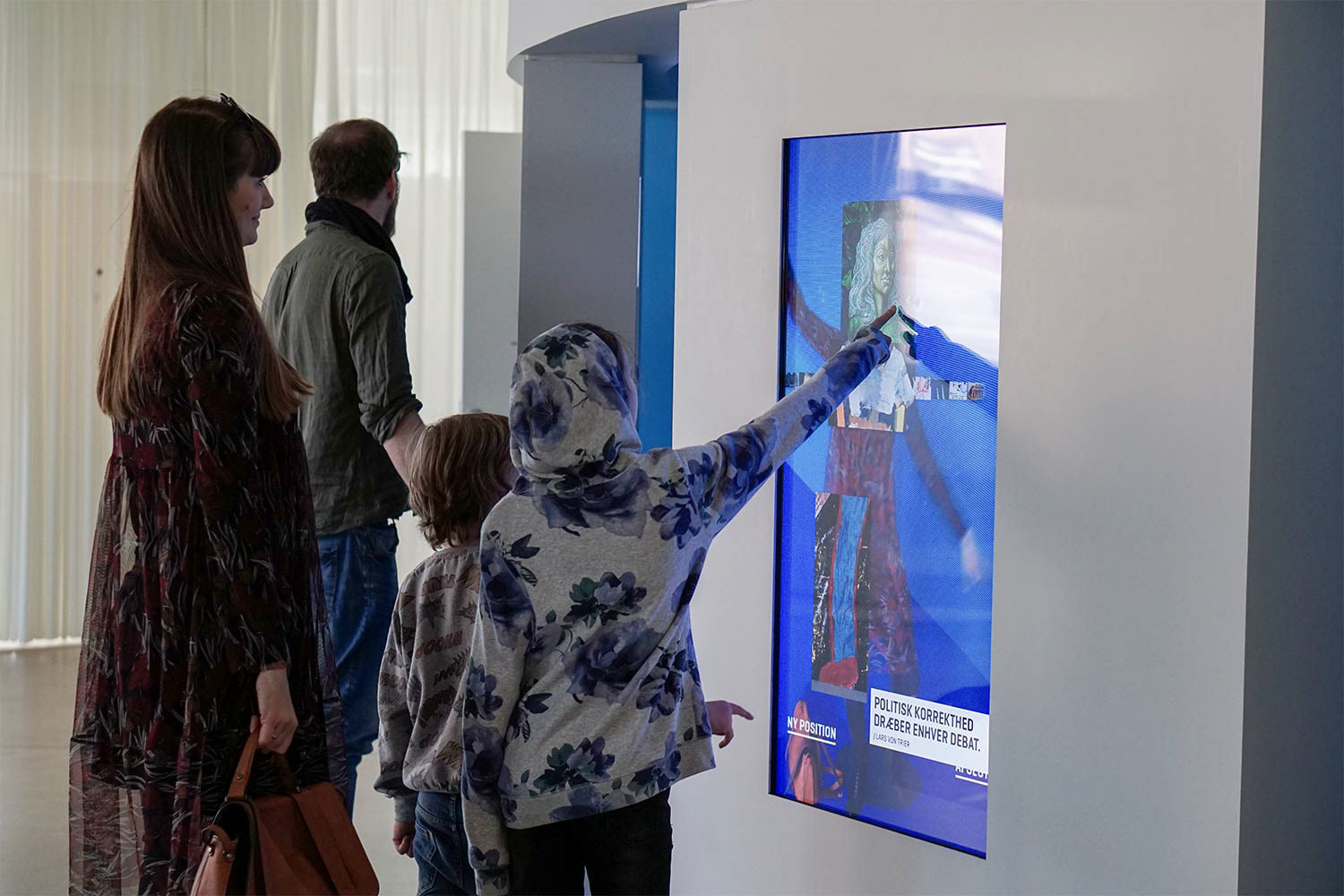Den Gamle By is an open-air museum in the second largest city in Denmark. The museum consists represents three time periods: 1874, 1917, and 1974. The museum has many visitors including primary school classes. The museum offers school classes educational material; a piece of paper, a pen, and a set of challenges and items to look for. The older sections display items in glass boxes, however, items in the 1974-section are interactive. People are free to touch and try items such as phones, speakers, and mopeds.
Team members: Paulina Witczak, Daniel Nørskov, and Liridona Alliti.
The challenge
The board's challenge was to create a digital approach that aids the educational experience without compromising the unique experience of interacting with historical and cultural artefacts.



Everything in the kitchen can be touched and played with.
Digital and interactive
To understand how to improve otherwise analogue experiences digitally, we had to understand how users interact with these artefacts. This includes observing visitors at Den Gamle By, but also other museums such as ARoS and HEART. It was specifically behaviour and the physical interaction with the exhibitions. Combining the insights from observations and the insights from interviews with teachers, students, and representatives from Digital departments at the museums made it possible to form personas and start designing interaction.
Learning objectives from the Ministry of Education
The project worked with learning objectives for children age 10-12 in History-class. The learning objectives are defined by the Danish Ministry of Education; including chronology, family structures, and culture. The newest section in Den Gamle By consists of multiple flats representing the variety of lifestyles in the 70s: communal living, single parents, a blind man, and a nuclear family.
Teachers are motivated to visit Den Gamle By with their classes when the tasks correspond with the learning objectives taught in class.
Research showed that teachers are more than willing to go through the trouble of organising an outing when it is 1) an educational experience for the children, and 2) a fun experience, the class can reflect on. The teachers introduces the 1970s before visiting the museum and groups students. When the class arrives, they're given a tablet (such as an iPad). A different flat or shop has been assigned to each group. The web application takes the children through the flat step by step by reading, noticing, touching, and taking images. After the visit, all material collected by the students will be sent to the teacher for further discussion back in the school. Therefore, no papers get lost in bags on the way.
It was important to understand how children experience the museum, and how a digital product can aid their experience - instead of replacing it. The application guides them to find the right places using images. The children can then take images, record sound, type and choose adjectives.
Defining the journey through storyboarding and later testing made it valuable for the children.
AN EDUCATIONAL WEB APP
The solution was an educational web application that functions as a guide and tool to experience the museum in a controlled, yet explorative way. It is important that history can be experienced. It is educational, explorative, and entertaining.
The prototype shows an example of one task flow for one of the flats.



